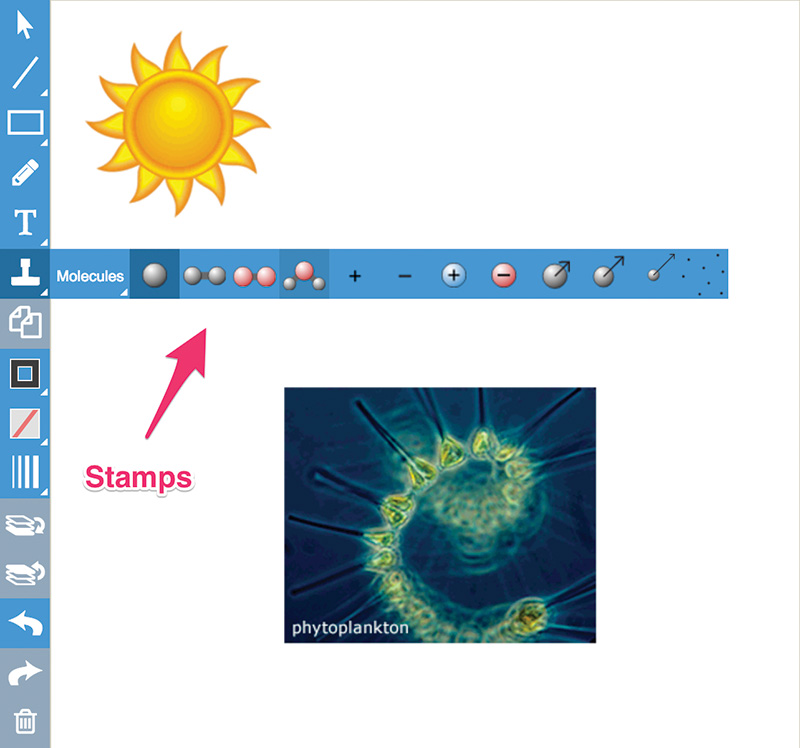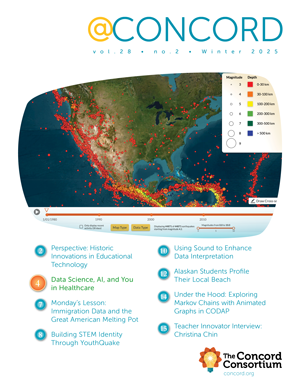Using Technology to Enhance NGSS-Aligned Assessment Tasks for Classroom Formative Use
The Next Generation Science Standards (NGSS) are written as Performance Expectations that integrate the three dimensions of each standard: disciplinary core ideas, crosscutting concepts, and science and engineering practices. To measure student progress toward achieving proficiency in any standard, an assessment task must include all three dimensions. One of the major challenges in NGSS-aligned assessment design is creating tasks that include science and engineering practices. Technology is a uniquely adept tool for designing and delivering tasks that can meaningfully include the practices. Without technology, many performance tasks would be difficult or impossible to implement in any other way.

The Next Generation Science Assessment project is a collaboration between the University of Illinois at Chicago, Michigan State University, SRI International, and the Concord Consortium, with funding from the National Science Foundation and the Moore Foundation. We are currently developing technology-enhanced assessments for classroom formative use that address middle school physical and life science NGSS Performance Expectations. The Concord Consortium’s online delivery platform allows us to take advantage of web-based tools and simulations that benefit students and teachers, as well as researchers on our team working to validate and improve the assessment tasks.
Student benefits
Designing assessments to gauge student progress toward the NGSS science and engineering practices of “developing and using models” and “planning and carrying out investigations” poses the biggest challenge. These science practices are inextricably linked with the other six practices, but they are the most difficult to design assessment tasks for without the special affordances of technology.
Our task authoring system allows us to integrate computational models, which students can manipulate to explore phenomena, to generate data for a scientific argument, or to carry out an experiment they have planned or designed. An embedded drawing tool permits students to express their ideas using scaffolded background images, stamps, and manipulable objects (Figures 1 and 2).

For example, Performance Expectation MS-PS3-4 states: Plan an investigation to determine the relationships among the energy transferred, the type of matter, the mass and the change in the average kinetic energy of the particles as measured by the temperature of the sample. In one of our assessment tasks, students must determine how much thermal energy to transfer to a sample of oil with a particular mass to heat it to a specific temperature. To answer the question the student must design an experiment using a simulation and carry out that investigation (Figure 3). Through analyzing the data generated by the computational model, the student can determine the proper amount of thermal energy to add to any amount of oil.
In other tasks students are asked to develop models, as in Performance Expectation MS-LS2-3: Develop a model to describe the cycling of matter and flow of energy among living and nonliving parts of an ecosystem. Using the drawing tool or other custom interactive component, students can develop a model in response to assessment tasks that address this Performance Expectation.

Teacher benefits
Through an online portal, teachers can easily set up classes, assign specific tasks, and generate collated reports of student work, making the tasks ideal for formative use. Teacher reports are updated in real time, allowing for close monitoring of student progress. Teachers can share and highlight student work just minutes after students have completed the tasks, including developing their own models and other artifacts. Student work can be used to drive classroom instruction or to adjust pedagogical strategies for the next class.
Rubrics linked to each task will soon be available to help teachers understand which aspects of student work are progressing toward mastery of the Performance Expectation and which need reinforcement. Teachers can provide online feedback to individual students within the portal.
Researcher benefits
To develop the assessment tasks, our team employs a rigorous multi-step process (Figure 4). First, we identify a Performance Expectation (PE) or related cluster of PEs. Then we perform a domain analysis to unpack the relevant NGSS dimensions (disciplinary core ideas, practices, and crosscutting concepts), from which we create an integrated dimension map of the unpacked components. Using this map we link sub-components from each dimension to construct a three-dimensional construct we call a Learning Performance (LP), which is a smaller grain size than the PE. Several LPs are generated for each PE. Together they provide guidance at a more detailed level about student progress toward the Performance Expectations.
Developing the LPs and task design templates is part of the domain modeling process, after which individual assessment tasks are created. In the process of task design, we consider where technology can best be applied to achieve the task design features. We then review each task for scientific accuracy, equity, and fairness, and test the assessments with students in a classroom setting and in a more individualized environment where students can think aloud while being observed during engagement with the assessment tasks.
Because the tasks are online, log data of student interactions with the tasks and the interactive components provides valuable information about task difficulty as well as student strategies for exploring computational models and the drawing tool. Using electronic data from students in our research cohort, researchers are able to analyze anonymized data across classrooms, teachers, and schools, aiding in our efforts to establish the validity of our tasks, and making it easier to locate and implement improvements in task design.

Conclusion
The Next Generation Science Assessment project has developed and tested assessments for several PEs in middle school physical science. Additional assessment tasks relevant to several middle school life science PEs are currently under development and will be available soon. We are also developing teacher guides for the tasks and suggested rubrics linked to each task.
We are encouraged by the strong interest in these assessments tasks. As more states and districts strive to enact an NGSS-aligned approach to teaching and learning, we hope to develop additional tasks oriented toward more PEs in new disciplinary areas and for a wider range of grades.
Dan Damelin (ddamelin@concord.org) is a technology and curriculum developer.
This material is based upon work supported by the Moore Foundation and the National Science Foundation under grant DRL-1316874. Any opinions, findings, and conclusions or recommendations expressed in this material are those of the author(s) and do not necessarily reflect the views of the National Science Foundation.
